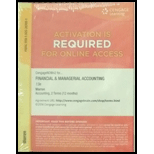
a)
Bonds Payable: Bonds payable are referred to long-term debts of the business, issued to various lenders known as bondholders, generally in multiples of $1,000 per bond, to raise fund for financing the operations.
Premium on bonds payable: It occurs when the bonds are issued at a high price than the face value.
Effective-interest method of amortization: It is an amortization model that apportions the amount of bond discount or premium based on the market interest rate.
Present Value: The value of today’s amount expected to be paid or received in the future at a compound interest rate is called as present value.
To Calculate: The amount of cash proceeds (present value) from the sale of the bonds.
b)
To Calculate: The amount of premium to be amortized for the first semiannual interest payment period.
c)
To Calculate: The amount of premium to be amortized for the second semiannual interest payment period.
d)
The amount of bond interest expense for first year.
Trending nowThis is a popular solution!

Chapter 12 Solutions
CengageNOWv2, 2 terms Printed Access Card for Warren?s Financial & Managerial Accounting, 13th, 13th Edition
- Mangesh Analytics, Inc. sells earnings forecasts for European securities. Its credit terms are 2/15, net 40. Based on experience, 60 percent of all customers will take the discount. What is the average collection period?arrow_forwardMCQarrow_forwardMangesh Analytics, Inc. sells earnings forecasts for European securities. Its credit terms are 2/15, net 40. Based on experience, 60 percent of all customers will take the discount. What is the average collection period? HELParrow_forward
- Carter Corporation has fixed costs of $1,800,000, and variable costs are 45% of sales. What are the required sales if Carter Corporation desires a net income of $200,000?arrow_forwardMonu Enterprises received $9,000 cash from the sale of a machine that had a $13,000 book value. If the company is subject to a 25% income tax rate, the net cash flow to use in a discounted-cash-flow analysis would be:arrow_forwardWhy does stakeholder impact analysis matter? [Financial Accounting] A. Impact remains constant B. Users need identical information C. Different user needs affect reporting choices D. Shareholders alone matterarrow_forward

 AccountingAccountingISBN:9781337272094Author:WARREN, Carl S., Reeve, James M., Duchac, Jonathan E.Publisher:Cengage Learning,
AccountingAccountingISBN:9781337272094Author:WARREN, Carl S., Reeve, James M., Duchac, Jonathan E.Publisher:Cengage Learning, Accounting Information SystemsAccountingISBN:9781337619202Author:Hall, James A.Publisher:Cengage Learning,
Accounting Information SystemsAccountingISBN:9781337619202Author:Hall, James A.Publisher:Cengage Learning, Horngren's Cost Accounting: A Managerial Emphasis...AccountingISBN:9780134475585Author:Srikant M. Datar, Madhav V. RajanPublisher:PEARSON
Horngren's Cost Accounting: A Managerial Emphasis...AccountingISBN:9780134475585Author:Srikant M. Datar, Madhav V. RajanPublisher:PEARSON Intermediate AccountingAccountingISBN:9781259722660Author:J. David Spiceland, Mark W. Nelson, Wayne M ThomasPublisher:McGraw-Hill Education
Intermediate AccountingAccountingISBN:9781259722660Author:J. David Spiceland, Mark W. Nelson, Wayne M ThomasPublisher:McGraw-Hill Education Financial and Managerial AccountingAccountingISBN:9781259726705Author:John J Wild, Ken W. Shaw, Barbara Chiappetta Fundamental Accounting PrinciplesPublisher:McGraw-Hill Education
Financial and Managerial AccountingAccountingISBN:9781259726705Author:John J Wild, Ken W. Shaw, Barbara Chiappetta Fundamental Accounting PrinciplesPublisher:McGraw-Hill Education





